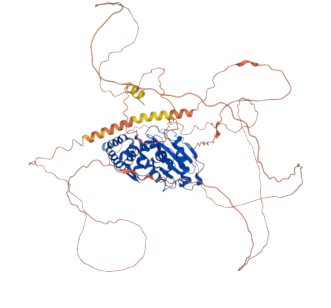Revolutionary Insights into Pseudomonas Syringae's Adaptive Mechanisms

A recent study conducted by researchers at the Leibniz Institute for Natural Product Research and Infection Biology (Leibniz-HKI) and Friedrich Schiller University Jena has unveiled significant findings regarding the plant pathogen Pseudomonas syringae. This bacterium, known for causing extensive damage in agricultural sectors, exhibits a remarkable genomic diversity that enhances its adaptability to environmental changes. The study was published on June 25, 2025, and highlights the potential of Pseudomonas syringae to produce a variety of biologically active natural products that could be utilized in agricultural and pharmaceutical applications.
The research team employed advanced bioinformatics methods to analyze 18 strains of Pseudomonas syringae, uncovering a total of 231 biosynthetic gene clusters. These gene clusters are pivotal as they encode enzymes responsible for synthesizing natural products that help the bacterium compete with other microorganisms. According to Dr. Pierre Stallforth, a professor at the University of Jena and head of the project, the abundance of genes for nonribosomal peptide synthetases (NRPS) suggests that these compounds are crucial in the bacterium's ecological success.
Among the newly identified compounds are syrilipamides and secimides, both of which exhibit potent toxicity against competing fungi and amoebae. The potential applications of these findings are vast, particularly in creating new agricultural protection products and developing antibiotics. The study also identified a novel SecA enzyme that adds chlorine to organic compounds, potentially enhancing the structural complexity and effectiveness of these substances in pharmaceutical research.
The ecological implications of these discoveries are significant. The biosynthetic capabilities of Pseudomonas syringae not only allow it to thrive in diverse habitats but also contribute to the intricate interactions within microbial communities in nature. This understanding is pivotal for future research into microbial ecology and the development of bioactive substances, as noted by Shuaibing Zhang, the first author of the study.
The research was supported by the Werner Siemens Foundation, the Leibniz Association, and the German Research Foundation as part of the Collaborative Research Center ChemBioSys and the Cluster of Excellence "Balance of the Microverse." These organizations emphasize the importance of understanding the ecological roles of natural products in shaping the interactions within microbial consortia.
As the implications of these findings ripple through both agricultural and pharmaceutical sectors, the future looks promising for the development of innovative biotechnological solutions that leverage the unique properties of Pseudomonas syringae. This research not only enhances our understanding of plant pathogens but also opens new avenues for harnessing their capabilities for beneficial applications. The evolving landscape of microbial research continues to unveil the hidden potential within these organisms, paving the way for breakthroughs in sustainable agriculture and effective medical therapies.
Advertisement
Tags
Advertisement





